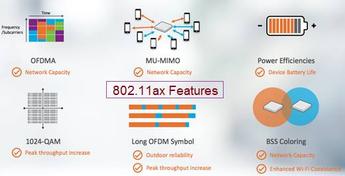Cellular Data vs. WiFi: Key Differences Explained
Advertisement
This article compares cellular data and WiFi, highlighting the differences between these two common data networks. We’ll also touch upon the integration of cellular and WiFi networks.
What is Data?
Definition: Data refers to electronic information transmitted over wireless or wired mediums connected to the internet. This transmission occurs using various computing devices such as mobile phones, laptops, desktops, PDAs, and tablets.
Depending on the network used for transportation, data can be categorized as WiFi data, cellular data, satellite data, fiber optic data, or internet data. The following activities and file types are all considered data:
- Sharing photos, images, or videos
- Sending and receiving e-mail messages
- Browsing the internet and social media platforms (Facebook, Twitter, etc.)
- Watching streaming videos
- Listening to streaming music
- Downloading applications from app stores (Apple, Microsoft, Google)
Cellular Data Network
Cellular data refers to data transmitted over a cellular network.
Various cellular networks exist, including 2G (GSM), 3G (WCDMA), 3.5G (HSPA+), 4G (LTE, Mobile WiMAX), 4.5G (LTE Advanced), and 5G NR (New Radio). These networks are listed in order of increasing data transfer speed.

Figure-1 : Cellular data network architecture
The cellular data network architecture comprises three main elements:
- Base Station (Network Side): This is the cellular tower itself.
- Mobile Subscriber (User Side): This refers to the user’s device (e.g., smartphone).
- Internet Backbone: This is the underlying network infrastructure that connects everything.
As shown in Figure 1, the cellular system connects with PSTN (Public Switched Telephone Network) and PSDN (Packet Switched Data Network) to support both circuit-switched and packet-switched data traffic.
For a deeper dive into cellular networks, refer to a dedicated cellular tutorial.
Key features of cellular data networks:
- Nationwide availability thanks to roaming functionality.
- Users are charged based on subscription plans and usage, varying across countries.
- Wider coverage range due to cellular tower height and transmit power, as dictated by RF link budget planning.

Figure-2 : Integrated cellular wifi architecture
WiFi Data Network
WiFi data is data transported over a WiFi network.
WiFi networks adhere to various IEEE WLAN wireless standards, such as 802.11a, 11b, 11g, 11n, 11ac (WiFi 5), and 11ax (WiFi 6).
WiFi is not universally available, but WiFi hotspots are increasingly common in business offices, malls, airports, and railway stations.

Figure-3 : Wifi data network architecture
WiFi data network architecture primarily consists of two elements:
- AP (Access Point) or Router: This is the device that broadcasts the WiFi signal.
- STAs (Stations): These are the devices that connect to the WiFi network.
WiFi typically operates on the 2.4 GHz and 5 GHz frequency bands and supports two modes: adhoc and infrastructure.
Key features of WiFi data networks:
- Often free of charge, especially in public places.
- Supports various data rates based on the WiFi standard used by APs (routers) and STAs (stations), generally faster than cellular data rates.
- Shorter coverage range compared to cellular networks.
Cellular Network vs. WiFi Network: A Tabular Comparison
| Features | Cellular network | WiFi network |
|---|---|---|
| Coverage distance | Larger | Smaller |
| Data rate | Lower (Depends on cellular technology), Latest 5G NR offers download speeds in between 1 Gbps to 10 Gbps and upload speeds less than download. | Higher (Depends on IEEE 802.11 standard), Latest wifi6 standard supports 600.4 Mbits/sec (with 80 MHz, 1 SS) and 9.6078 Gbits/sec (with 160 MHz, 8 SS). |
| Signaling | Out band signaling | In band signaling |
| Interference | Less | More as signal travels longer distance |
| Network architecture | Complex as it consists of many systems on Base Station side | Simple as it just requires APs or wifi routers to be installed |
Conclusion
Integrated WiFi cellular architectures are becoming increasingly common due to the complementary benefits of WiFi (higher speed) and cellular (larger coverage) technologies.
Cellular service providers often offload cellular data traffic to WiFi networks in areas with high user density. This benefits WiFi service providers by increasing their user base. Ultimately, end-users benefit from greater coverage, higher data rates, and more affordable costs.
Therefore, this integration benefits cellular service providers, WiFi service providers, and end-users alike.
For more insights, refer to articles comparing MiFi vs. WiFi and how both technologies are being used at home with advanced MiFi+WiFi routers.
Advertisement
 RF
RF



